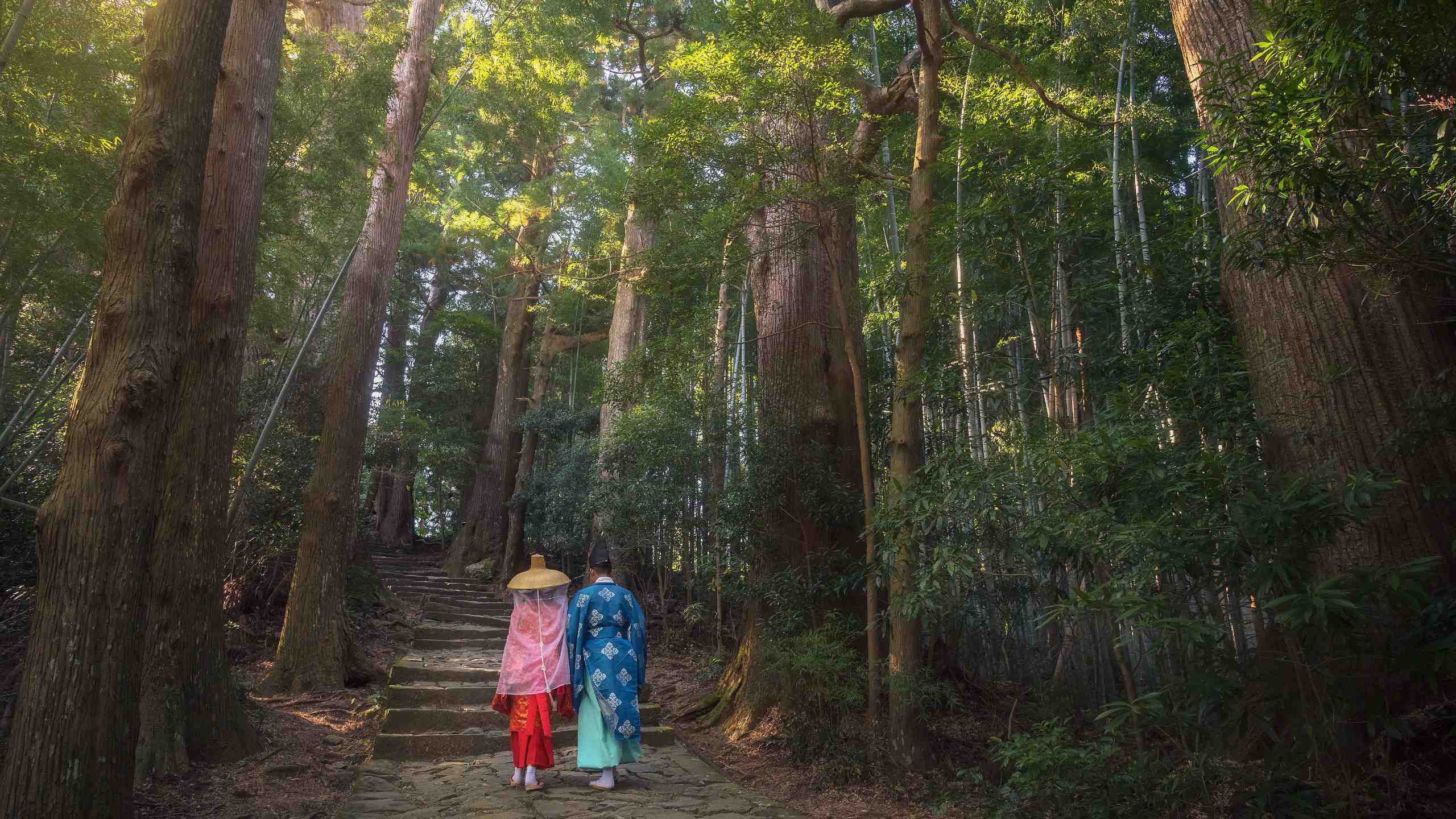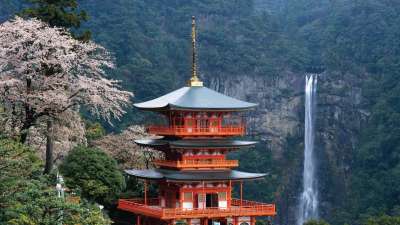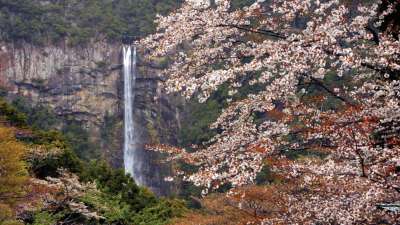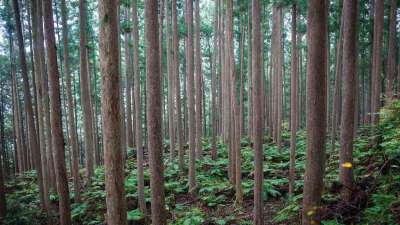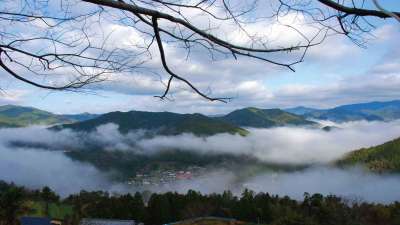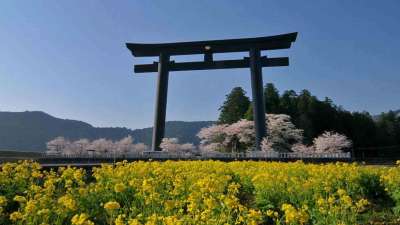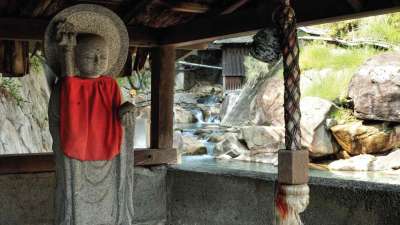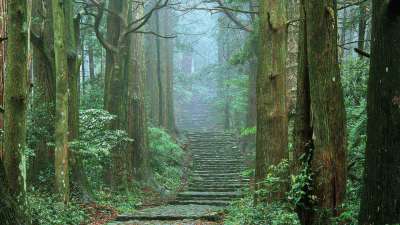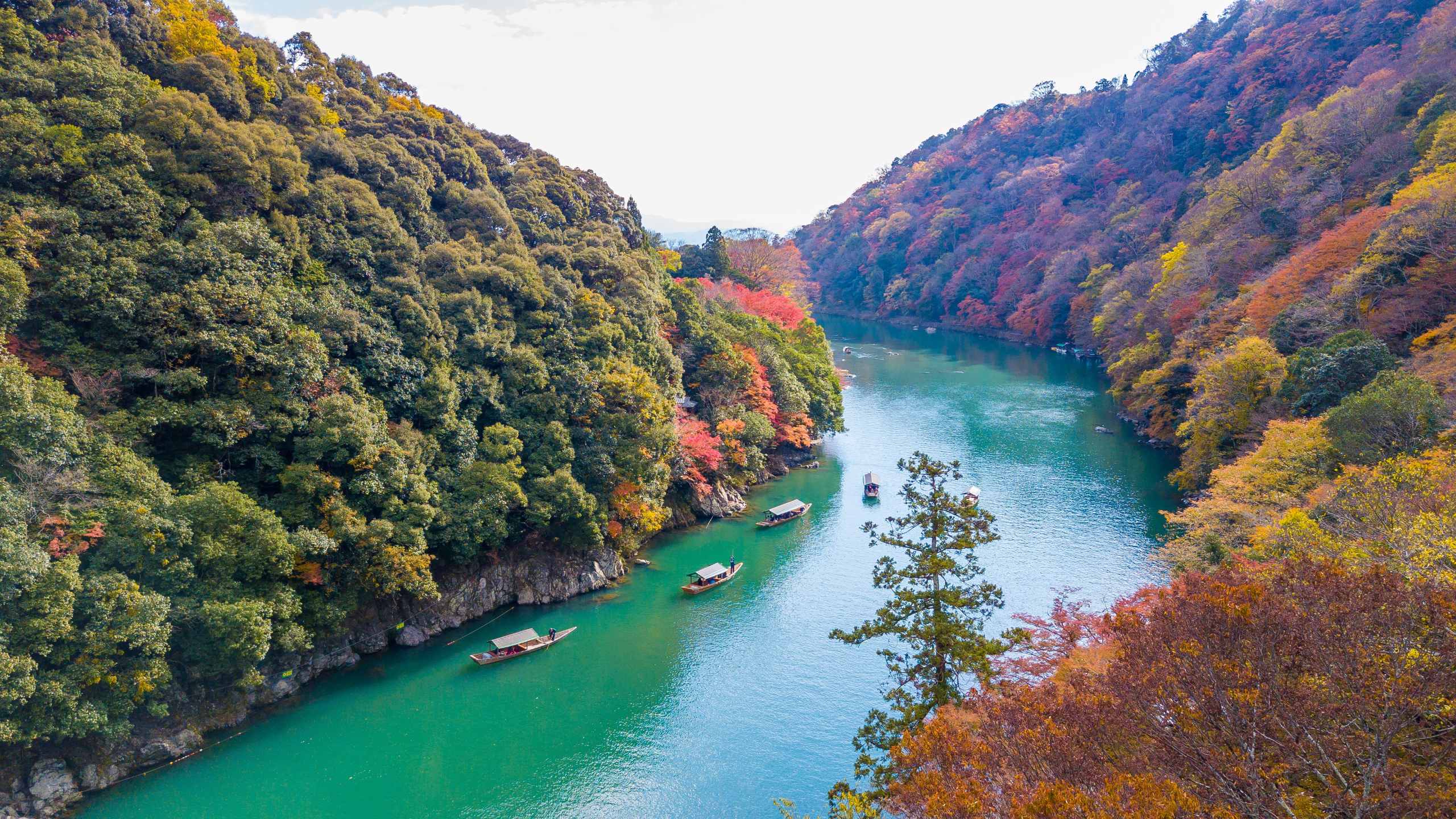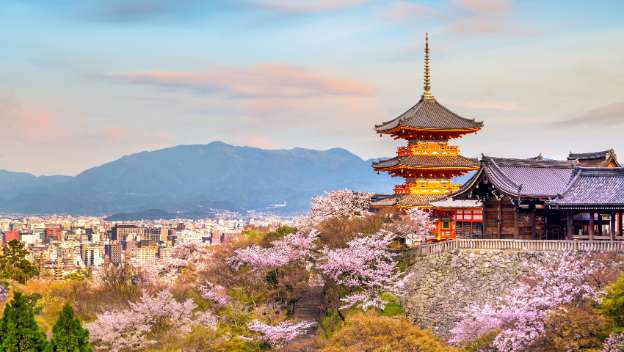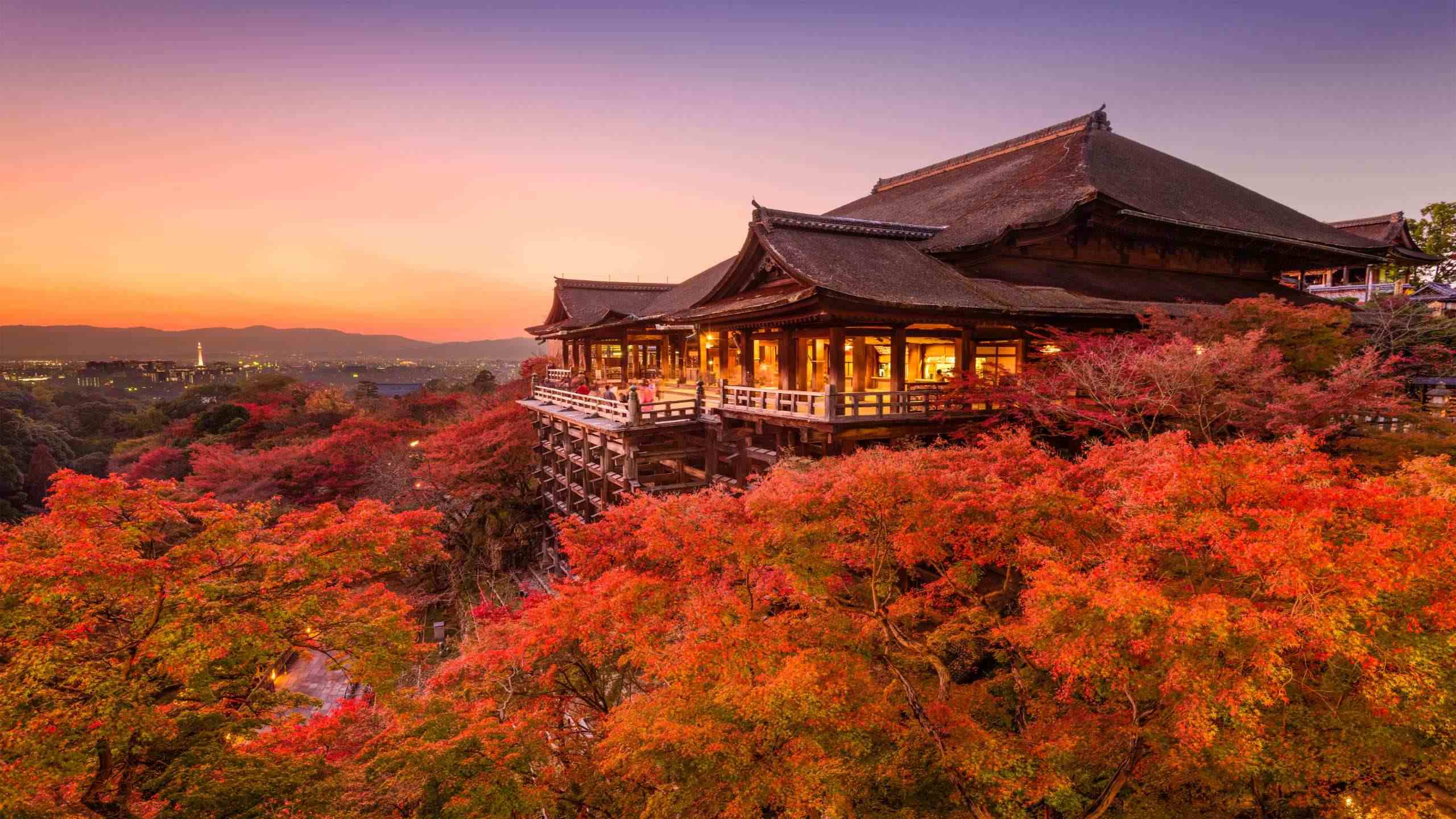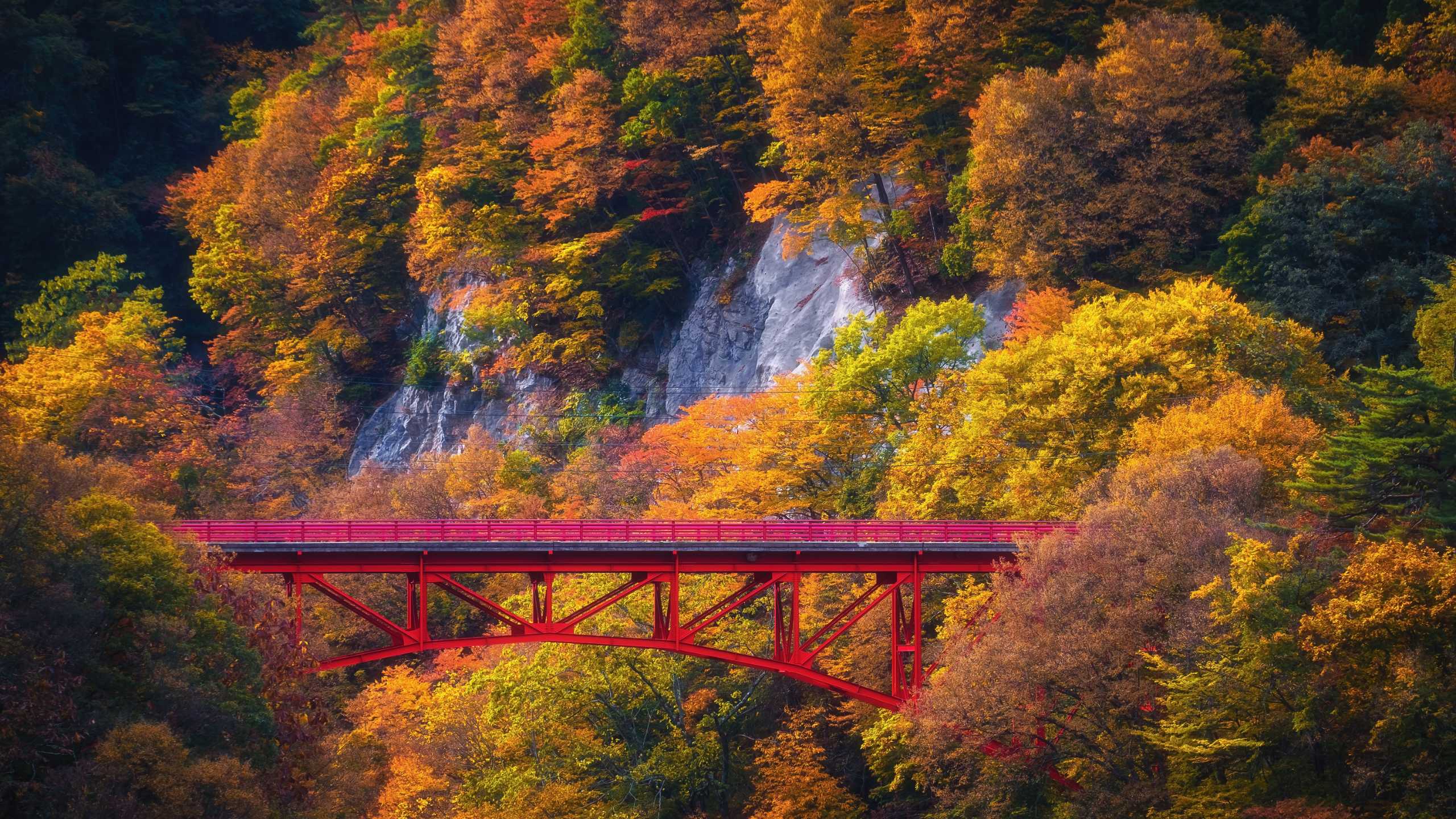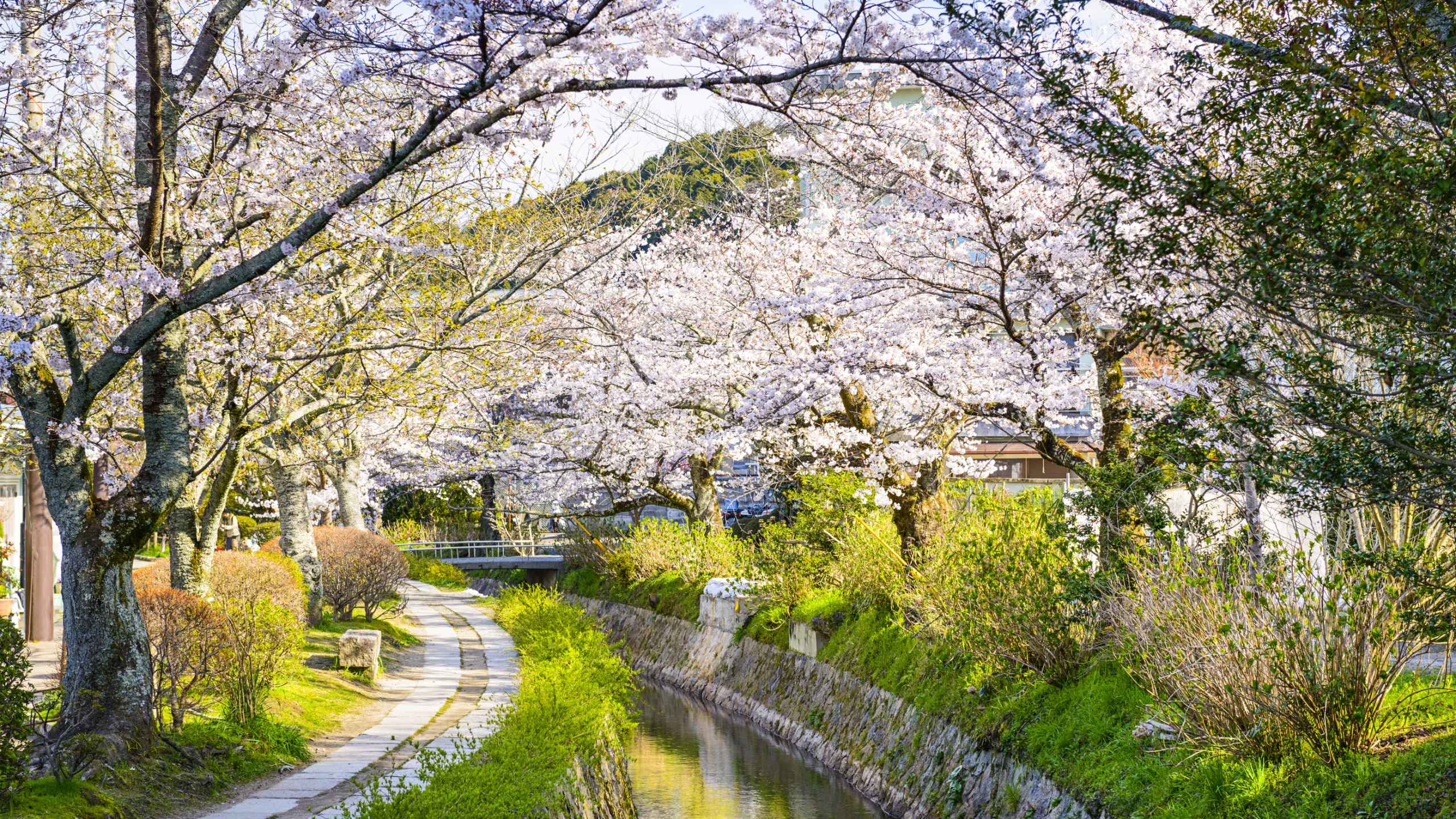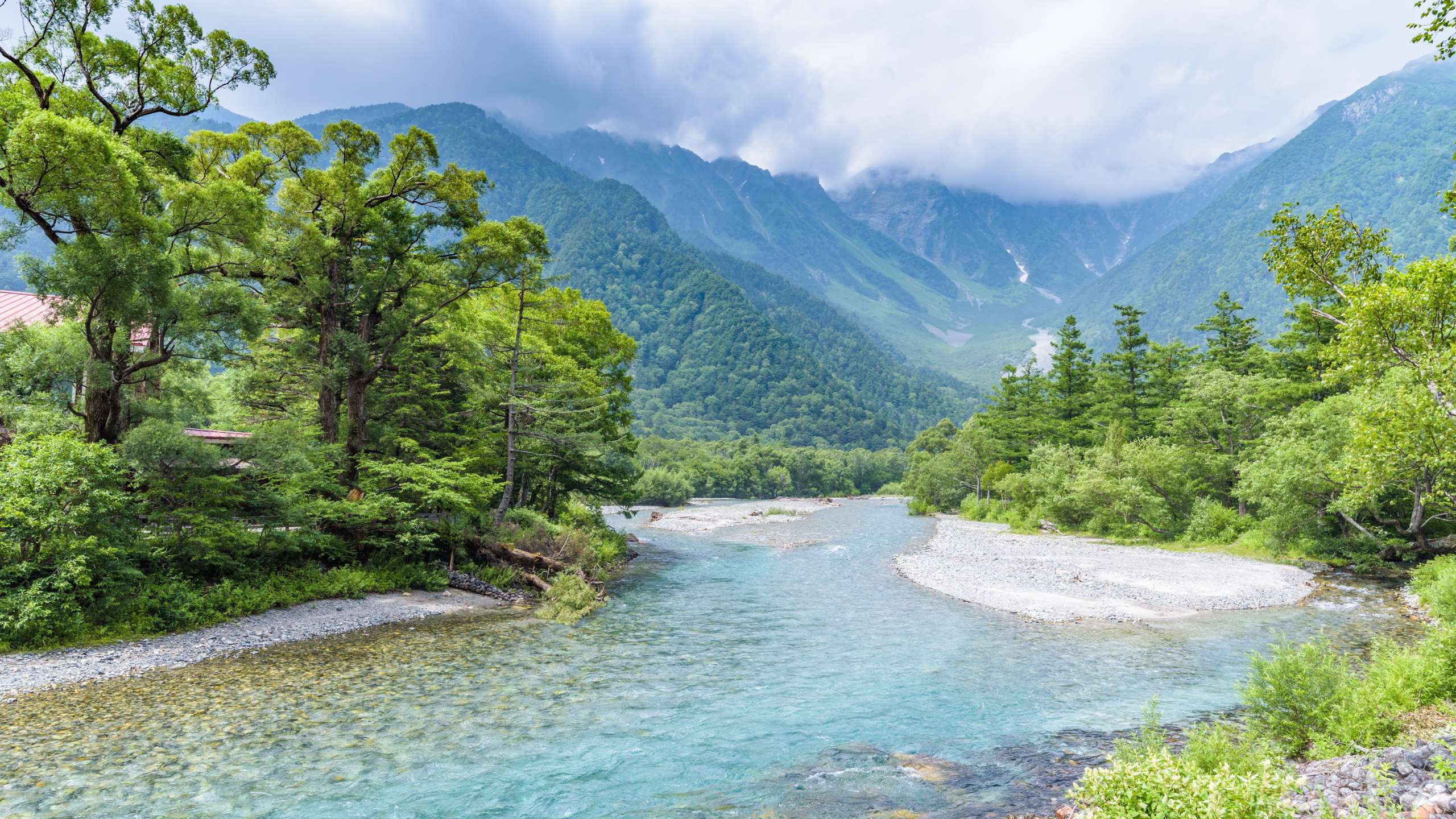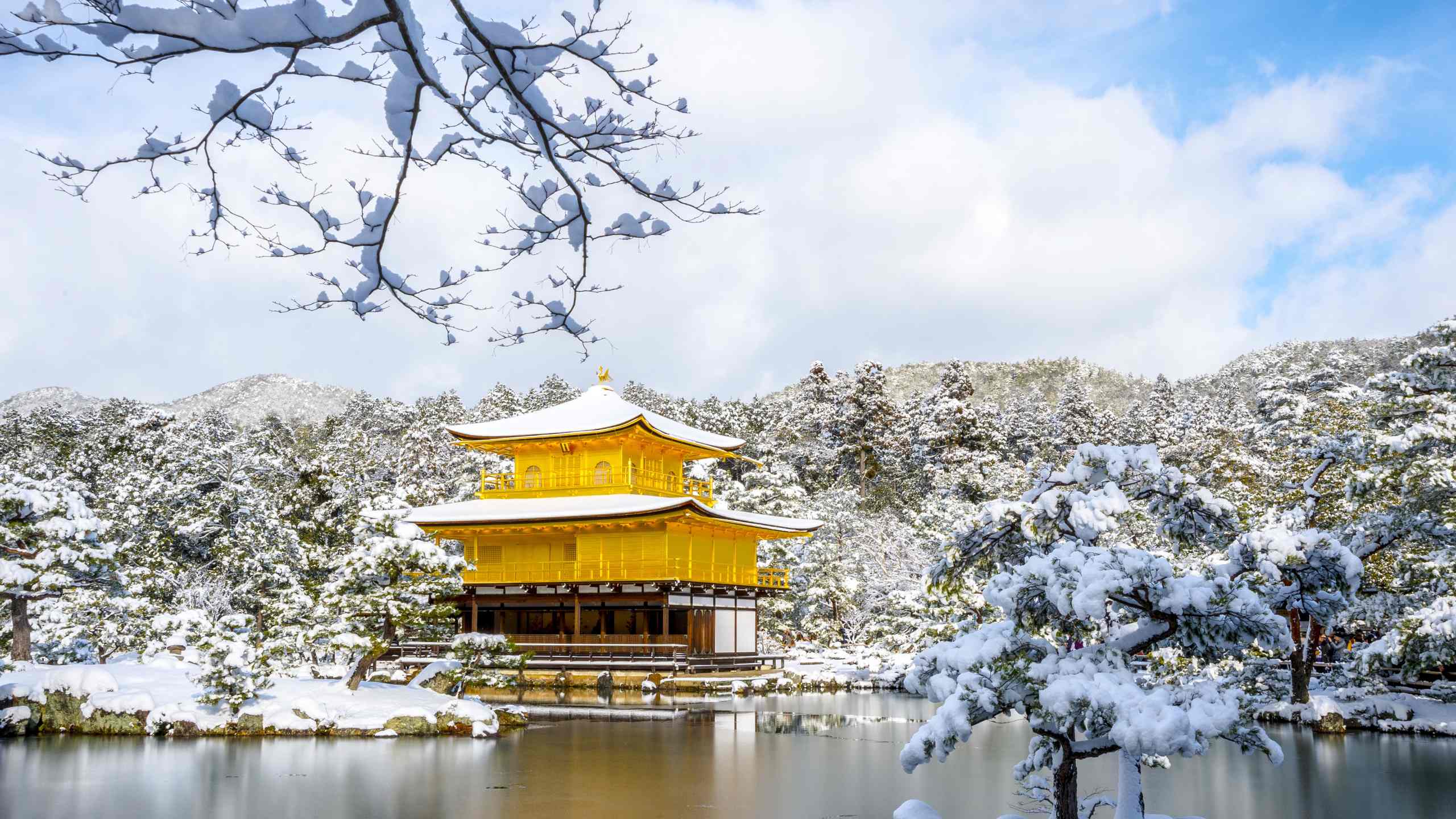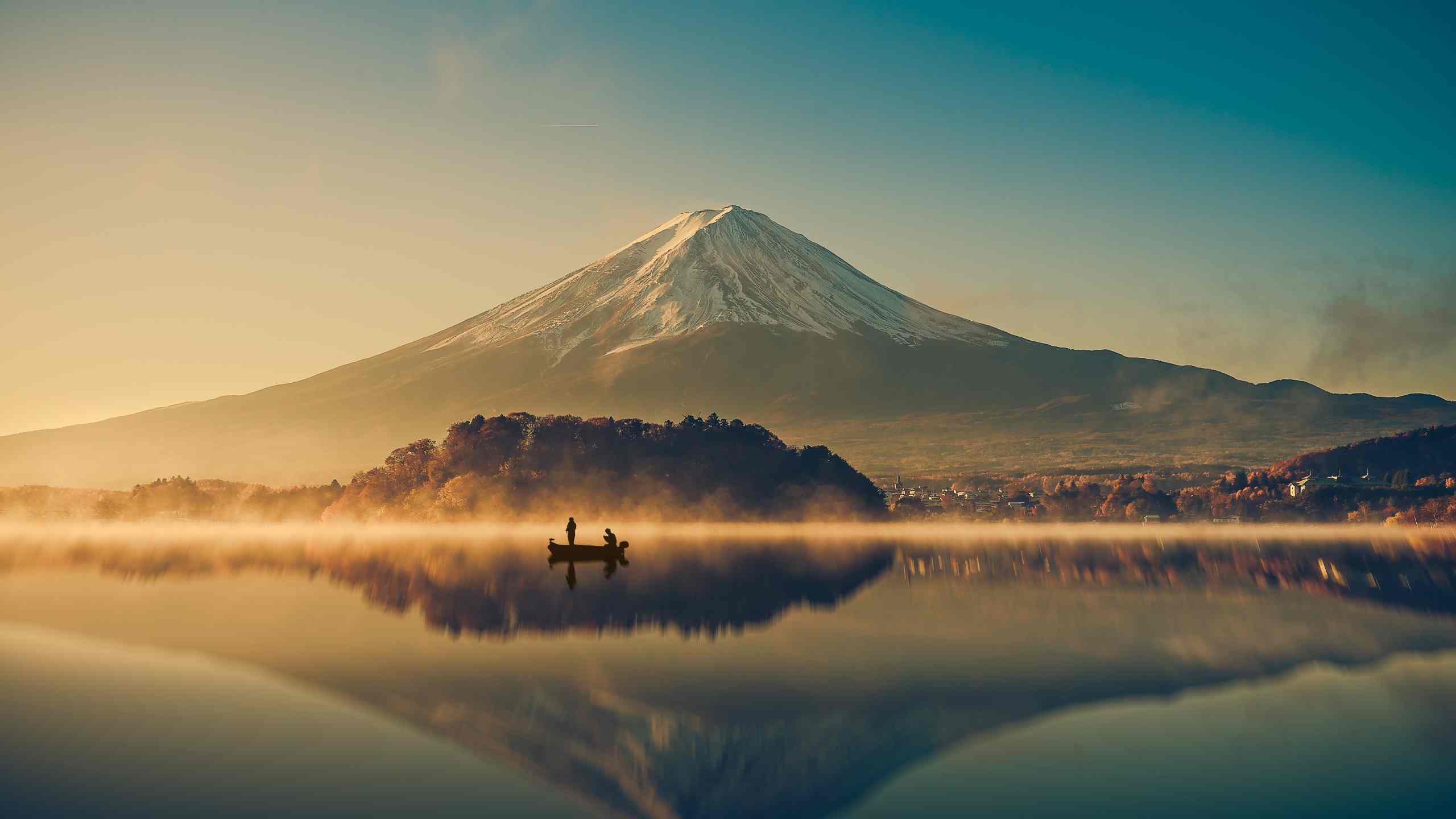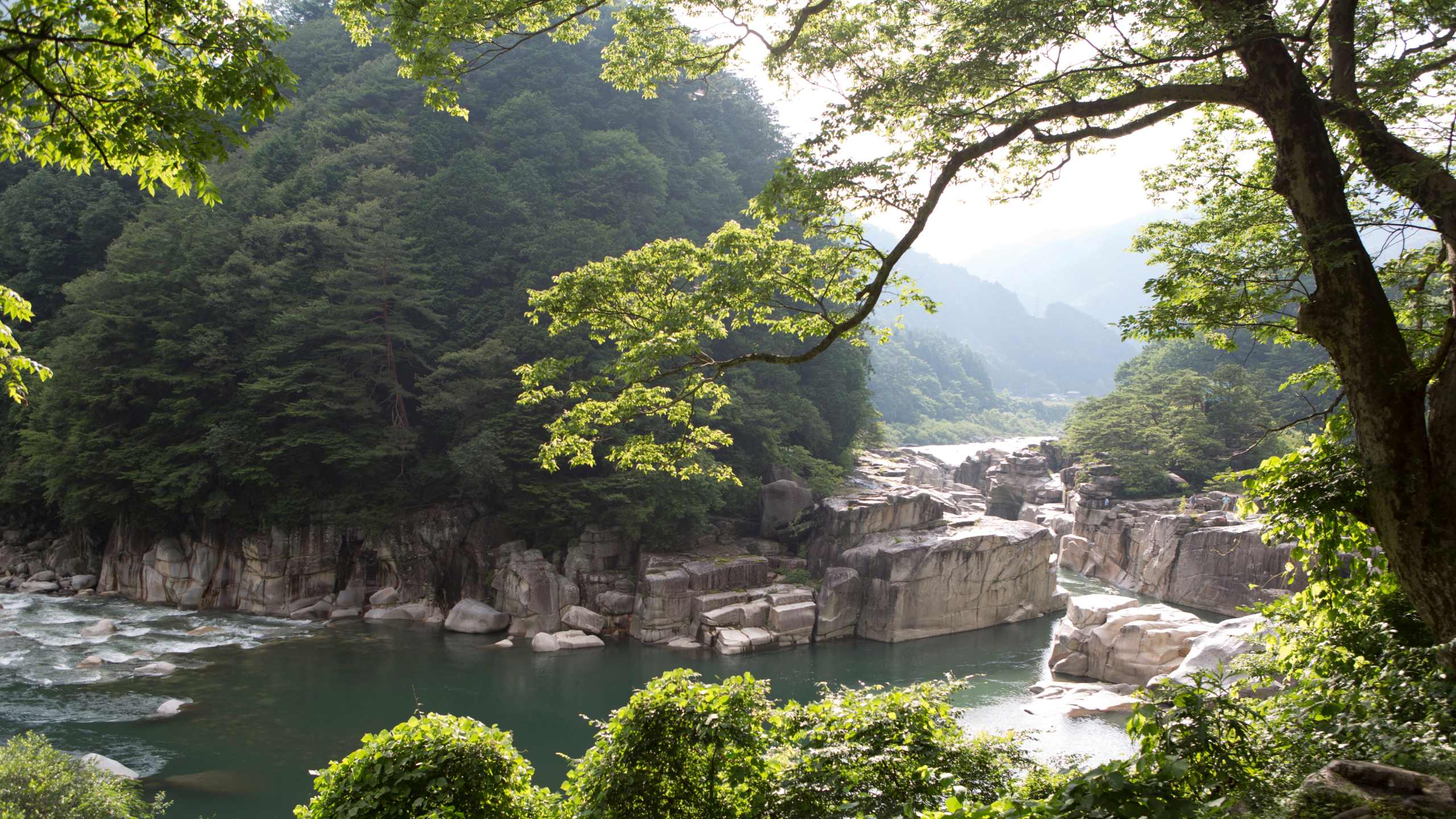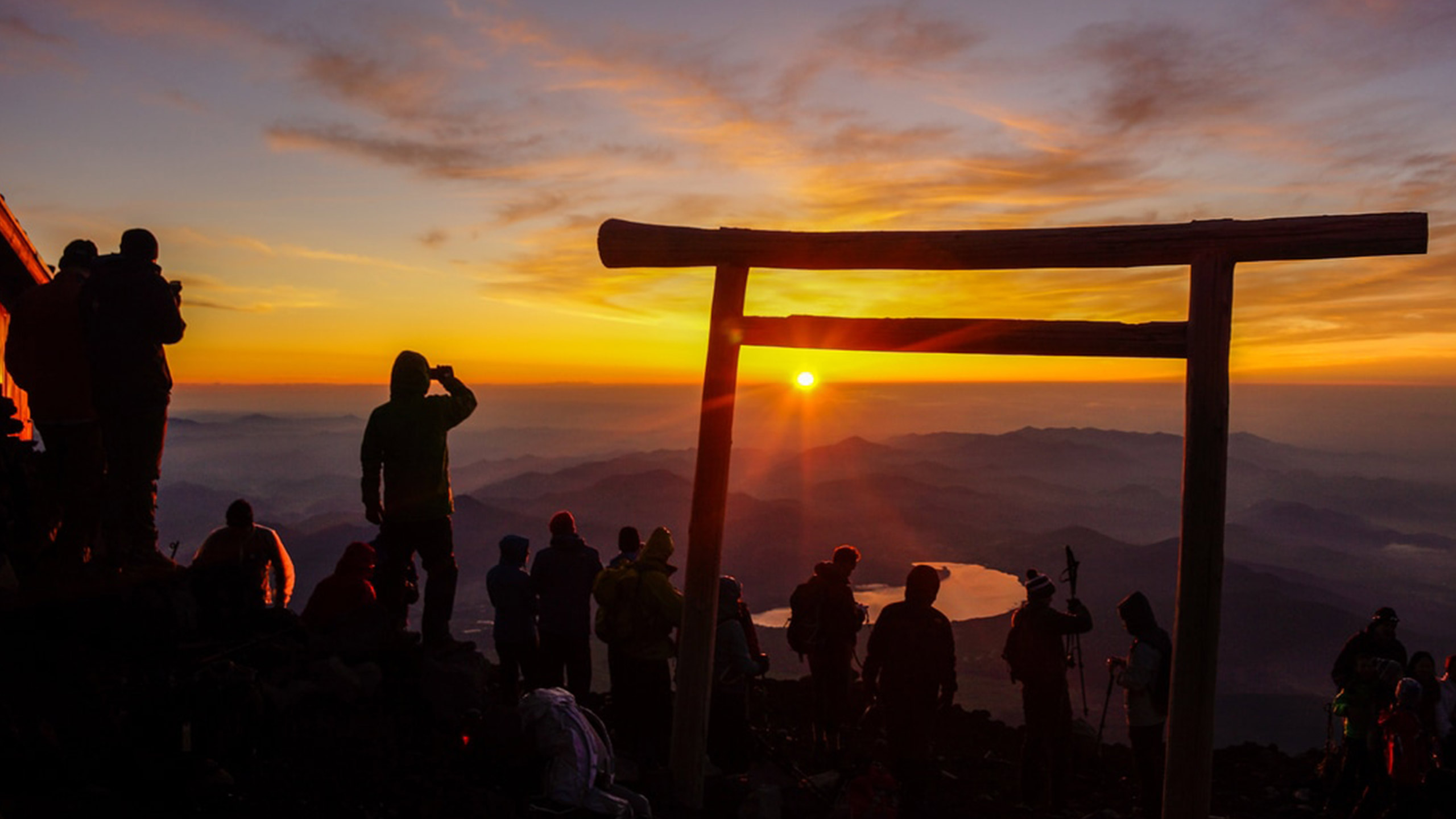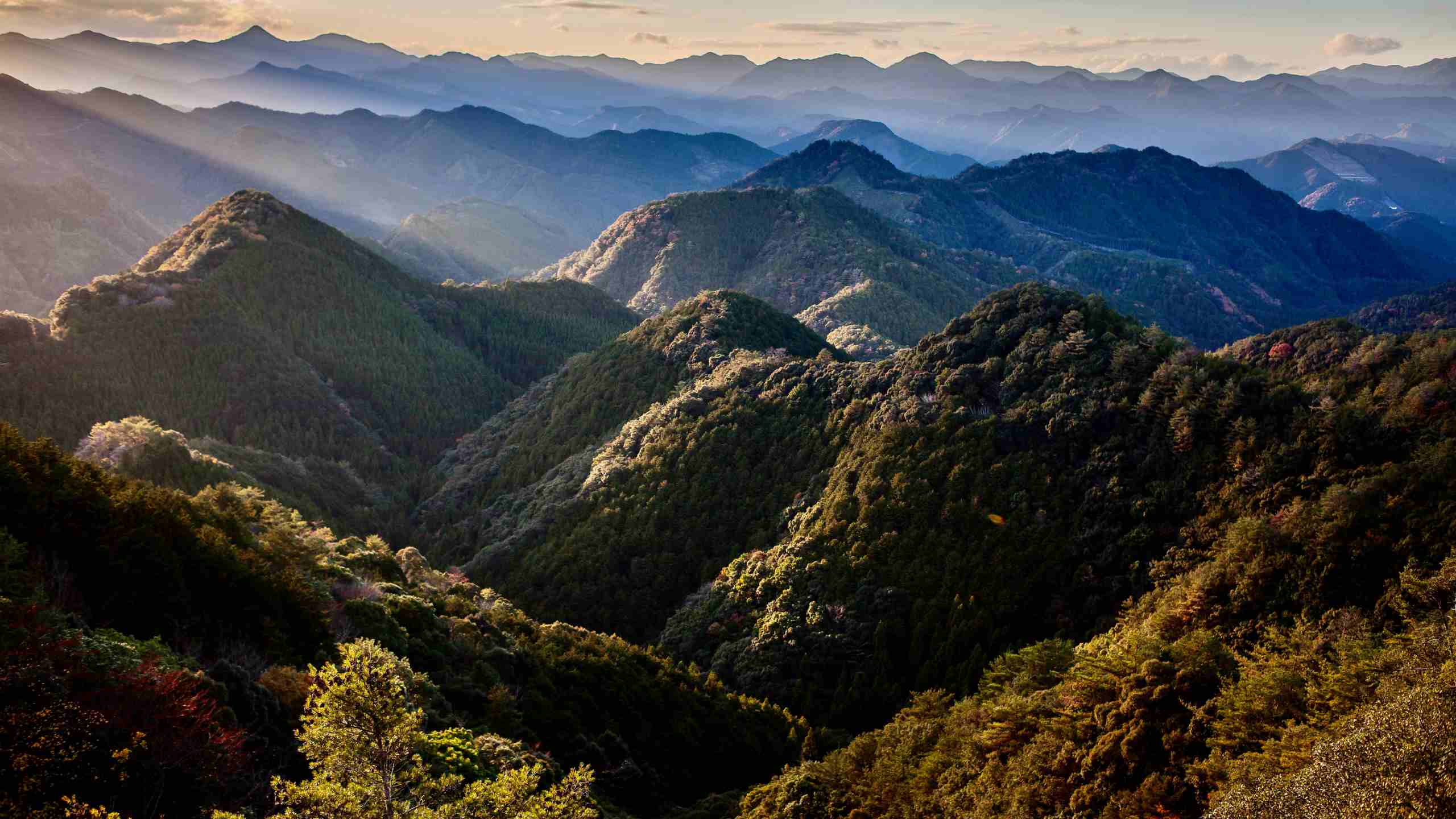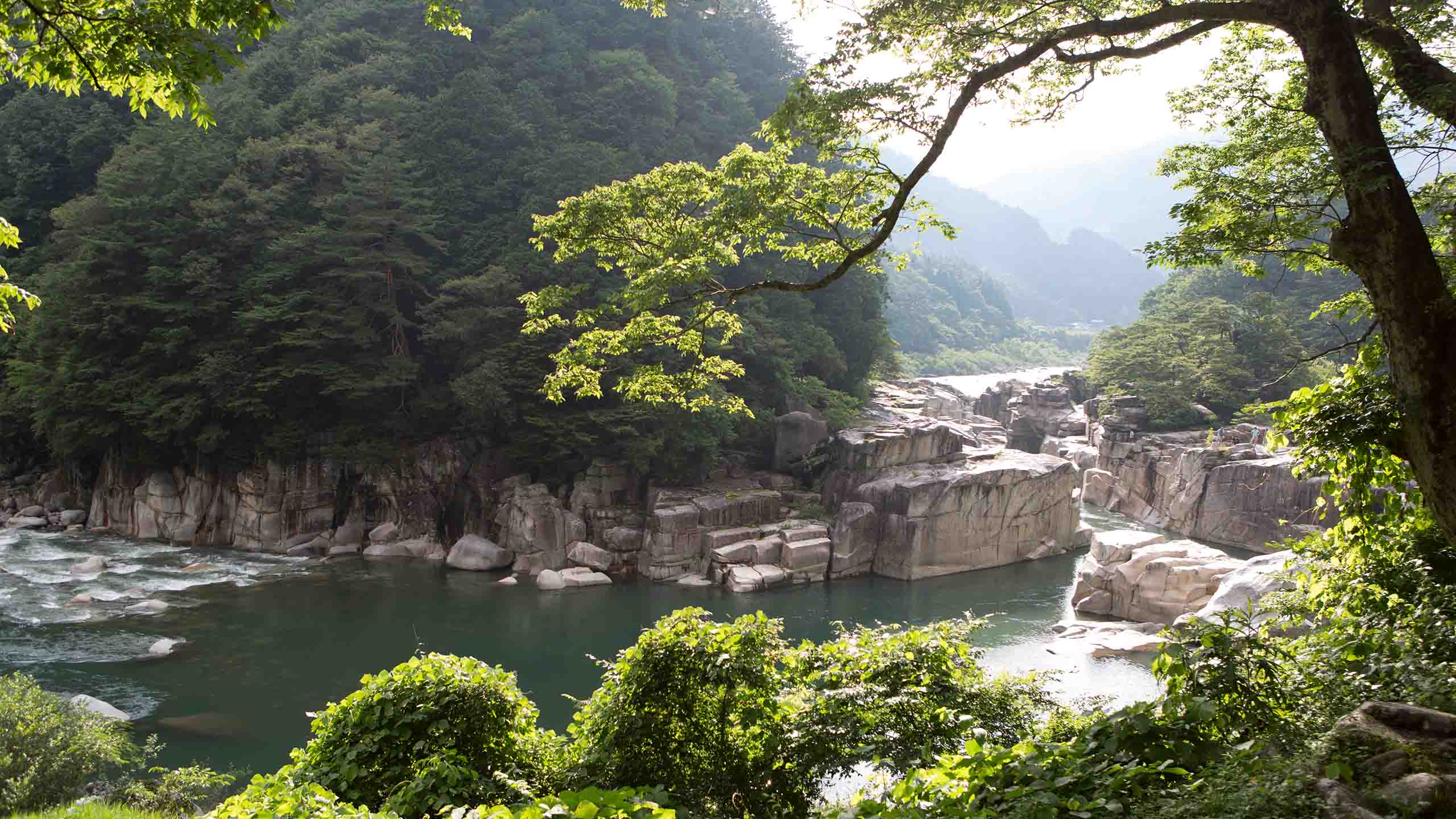Embark on a visually, physically, and spiritually rewarding odyssey through the ancient Nakahechi Route on the Kumano Kodo Trail. Encounter sights for sore eyes and a thousand opportunities for reflection. Dive into a life-changing experience traversing paths doused in history, soaking in rejuvenating hot springs, and witnessing sites overflowing with tranquillity and spirituality. If you are planning to walk the Nakahechi Route, you might like to read more on Where To Stay on The Kumano Kodo Pilgrimage Trail (The Nakahechi Route).
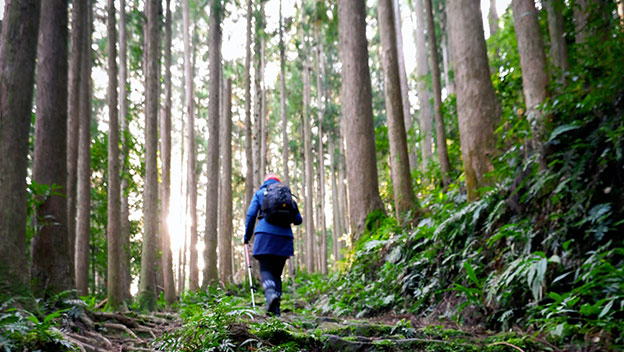
Overview
The Nakahechi Route is much more than a path leading to the Grand Shrines. Commonly referred to as the “Imperial Route,” it has been traversed by commoners and emperors alike seeking spiritual enlightenment. Existing for over 1,000 years, this route is a World Heritage site that features gorgeous landscapes and scenery peppered with sacred sites and historical landmarks.
Why Is the Nakahechi Route So Popular?
Many factors contribute to Nakahechi Route’s popularity including its history, panoramic scenery, location and accessibility.
Being the main path that links the grand shrines, this route has a rich history as it has witnessed the journey of pilgrims and emperors from over a millennia.
Another thing that sets it high up in the list of Kumano Kodo routes is its display of the gorgeous Japanese countryside, featuring cascading waterfalls and dense forests. This beauty is coupled with well-preserved trails that make exploring the area easy and blissful.
The Nakahechi Route also allows travellers to savour local experiences, from living in ryokans and participating in enrapturing rituals to interacting with locals and indulging in mouth-watering cuisines. To cap it off, it has impressive infrastructure and is the safest of all the Kumano paths.
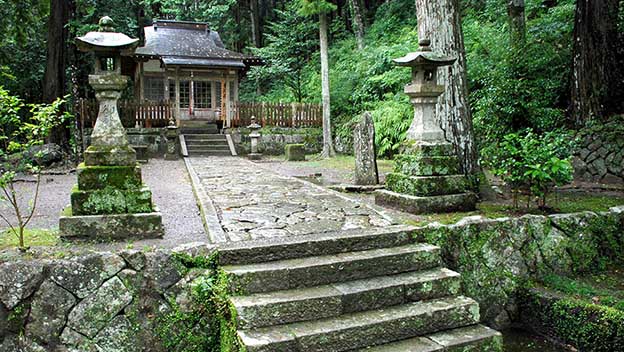
Nakahechi Trail Highlights that Captivate Travelers
Takijiri-Oji
The Takijiri-Oji is one of the major five Ojo and the go-to starting point for people seeking to traverse the Nakahechi trail and the Kumano Kodo pilgrimage. Between the 12th and 13th centuries, it was famed as a destination where pilgrims carried out ablutions before embarking on their journey.
It is a scenic shrine beside the Tonda River and within the Kii Mountains and is a trailhead for the Nakahechi path. Its surroundings feature a stunning mix of flora and fauna, rattling streams, and lush forests. As you journey, you will encounter a lookout point that provides views of breathtaking scenery before reaching Takahara.
Tanabe & Shirahama Onsen
Tanabe City serves as the entrance to the Nakahechi Route, where you can prepare yourself for the life-changing journey that awaits. At the Kumano Kodo Center, you can find valuable information on the Kumano Kodo Pilgrimage that will make your journey easier and more enjoyable.
While it’s the perfect place to prepare for your exciting journey ahead, Tanabe City offers much more than that. You can visit historical and cultural sites like the Tonda District and the Shirahama Jinja Shrine. You can also interact with locals, taste delectable cuisines and experience unique nightlife in the Ajikoju district.
Tanabe Bay is to the west with mountains rising in the east. Tanabe Bay is one of the most valuable natural environments in the world for its abundance and variety of sea life. Enjoy a relaxed guided kayaking tour around uninhabited Kashima Island, located in Tanabe Bay.
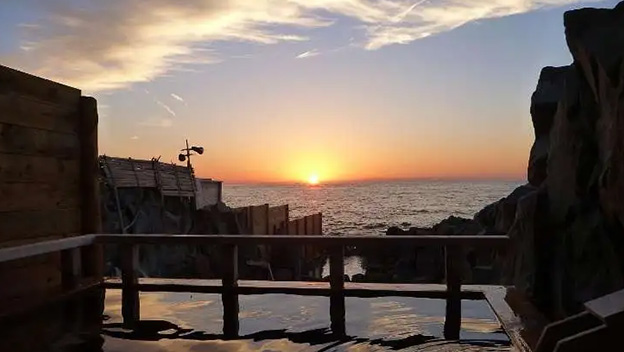
Photo credit: Shirahama Town Hall Tourism Division
The nearby Shirahama Onsen is located on the west coast of the Kii Peninsula across the bay from Tanabe and is one of the oldest hot springs in Japan. Many Kansai area people visit this white-sand beach destination in the summer time. While many onsen located in the Kumano area offer views of lush green mountains, the centuries-old Shirahama Onsen area provides its bathers something entirely different—a Pacific Ocean panorama. Throughout the hot spring resort's 1,300-year history, those soaking in its outdoor rock baths have enjoyed views of the unusual jagged rock formations shaped by the sea.
The Nanki-Shirahama Airport is quick access by taxi or bus to area accommodation and the Kumano Kodo. Three flights a day to-and-from Tokyo to Shirahama with just over an hour flight time make a convenient option.
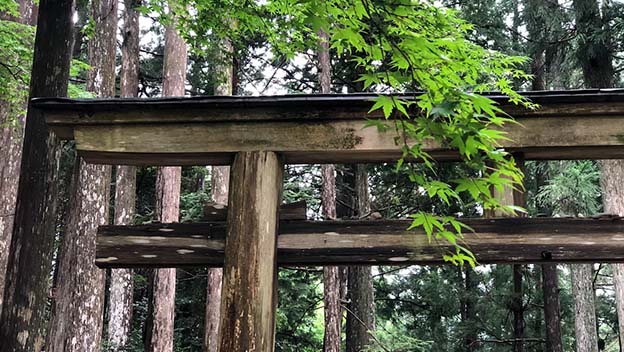
Tsugizakura-Oji
The Tsugizakura-Oji is an ethereal site seated within the flourishing forests of the Kii Mountains. It has been a magnet for pilgrims and tourists, drawing them in with breathtaking scenery and a serene atmosphere perfect for reflection. It also houses an awe-inspiring cedar tree, the Tsugizakura-Oji Sugi, that commands reverence and has been around for nothing less than 800 years. It holds gorgeous branches reaching for the skies and growing in Nachi Falls’ direction.
It doesn’t end there! Close to the Tsugizakura-Oji Sugi is a rustic shrine where you can truly soak in the tranquil atmosphere and pray for blessings before continuing your journey.
With its scenic landscapes, serene ambiance, and spiritual essence, this area is truly one of Nakahechi Route’s highlights.
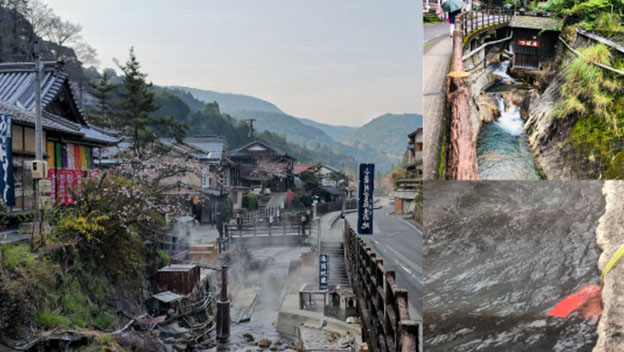
Yunomine Onsen & Kawayu Onsen
Discovered almost 2,000 years ago and famed as one of Japan’s oldest hot springs, the Yunomine Onsen is a destination you should surely visit when in the area. The waters here are rumoured to change colours about seven times daily and have healing powers.
The Yunomine Onsen is strongly linked to Japan’s spiritual culture, and pilgrims used to visit for purification rituals after a long day of traversing mountains and to prepare themselves before visiting Kumano Hongu Taisha.
Now, you can enjoy the experience of staying the night in a traditional Japanese ryokan and perhaps waking up to the amusing sight of locals boiling eggs in the hot spring.
The nearby hot spring town Kawayu Onsen is very unique. Anywhere you dig along the riverbank springs up hot water. Thermal water bubbles up from the river bed, allowing for hot-water bathing in a natural setting. Kawayu Onsen also features a Sumo Museum dedicated to the town's favourite son and biggest star, Taiho Koki, who achieved the sport's highest title in 1961 at only 21 years of age. He held the record for most tournament victories for several decades.
Kumano Sanzan
Kumano is the dwelling place of the Gods. The Kumano Kodo pilgrimage routes to the three Grand Shrines of Kumano (Kumano Hayatama Taisha Grand Shrine, Kumano Hongu Taisha Grand Shrine and Kumano Nachi Taisha Grand Shrine), have been listed as UNESCO World Heritage sites since 2004. The three Grand Shrines are usually called the Kumano Sanzan and are central to the Kumano faith.
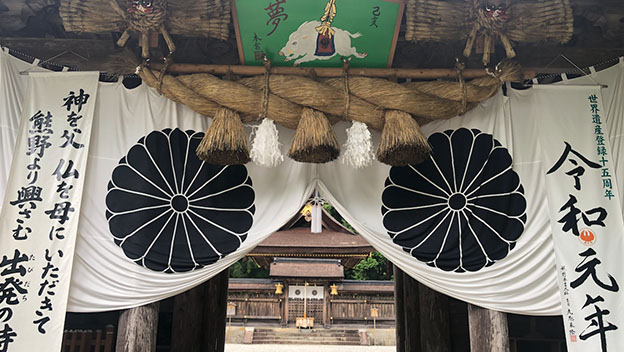
Nestled in the Kii Mountain range is the revered Kumano Hongu Taisha Grand Shrine, one of the shrines that make up the Kumano Sazans (Grand Shrines), and the head shrine of over 3,000 Kumano shrines in Japan. Its torii gate stands at an imposing height of 33 metres (108 feet) and is the biggest in the world. You can gain access to the shrine through the Nakahechi route.
In addition to its impressive torii gate, the Honu Taisha features other symbolic pieces like its main shrine building that make it nothing short of an architectural masterpiece. The paths are also decorated with cedar trees, providing a stunning natural ambiance.
Kumano Hayatama Taisha Grand Shrine lies beside the Kumano-gawa River and can be reached by a tradition boat ride. On the grounds of Kumano Hayatama Taisha Grand Shrine is a grand Asian Bayberry that was planted by Taira no Shigemori. It is believed to be more than 1000 years old has been designated as a Natural Monument. There is also the Kumano Sacred Treasure Museum, where more than 1000 nationally appointed cultural treasures are on display, including hiougi which are handheld fans made of cypress.
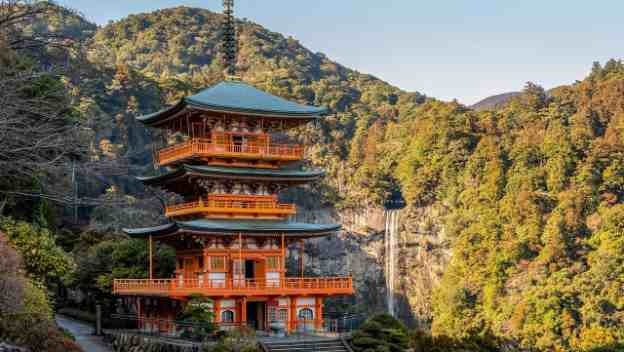
Photo credit: pen_ash
Kumano Nachi Taisha Grand Shrine can be reached by walking the Ogumotori-goe of the Nakahechi Route of the Kumano Kodo, or walking up the Daimon-zaka Slope trail, through a forest of centuries-old cedars. At the top of the trail, 473 stone steps lead to the gates of the shrine. A splendid view opens up upon reaching the plaza in front of the shrine. Next to the shrine is the main hall of Nachisan Seiganto-ji Temple, from which one can see Nachi Falls, one of Japan’s top three waterfalls.
Touring the Nakahechi Route allows you to experience Japan’s exquisite culture and tradition refreshingly. It takes you through time, moves you to tap into your spirituality, and feeds your eyes and heart with stunning scenery and warmth from locals.
